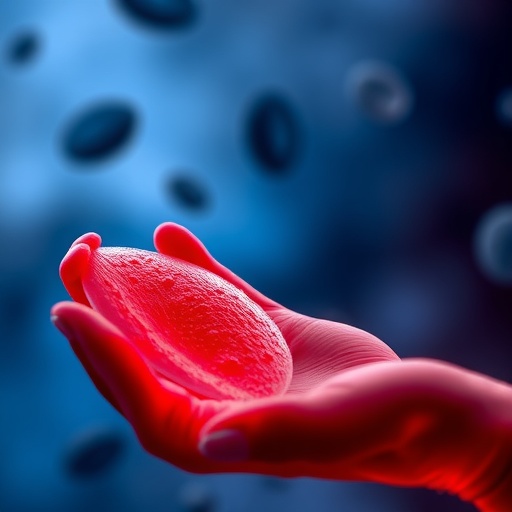Since its clinical description in 1881, Tay-Sachs disease has had almost totemic significance as a cruel and relentless genetic condition that destroys the developing brain of babies and young children. Formerly considered to be restricted to Ashkenazy Jews, it can occur at almost any age and in any ethnic group. Moreover, with its close relatives, Sandhoff disease and the exceptionally rare GM2 activator deficiency, Tay-Sachs often masquerades as other neurological illnesses. There is no treatment beyond palliative care, and with a pressing medical need so typical of countless other nervous diseases, there is a pressing need and a formidable challenge in contemporary research.
This article considers the history, social context and scientific complexities of Tay-Sachs disease: not only does it represent a metabolic defect of glycosphingolipids but it is, par excellence, a lysosomal disease and so a tantalising target for treatment by functional complementation. Lysosomes were discovered by Christian de Duve; but even though he had had training as a physician, the founding father of Cell Biology had little time for studying the pathogenesis of inborn lysosomal diseases. However, de Duve realised that lysosomes could be readily accessed from outside the cell and, at the end of his life, stated that his research had been motivated by his wish to cure diseases such as Tay-Sachs disease, which progressively destroys nerve cells. In considering Tay-Sachs and related lysosomal diseases, after a prolonged period of therapeutic research, gene therapy at last offers a highly promising and tractable stratagem. This sanguine conclusion emphasises the accuracy of de Duve's insights and the striking boldness of his vision.
The GM2 gangliosidoses comprise Tay-Sachs and Sandhoff disease as well as the ultra-rare GM2 activator protein deficiency, intimately linked biochemically, pathologically and clinically. Their manifestations result from defects in one of three genes: HEXA, HEXB and GM2A, which code for the α- and β-subunits of β-hexosaminidase and GM2 activator protein, respectively. The integrity of this triad, which cooperate to hydrolyse ganglioside GM2 in the lysosome, is an absolute requirement; and when one or other of the genes is dysfunctional, GM2 ganglioside accumulates progressively in tissues rich in this sphingolipid such as the brain. Disease onset correlates roughly with residual enzymatic activity. Typically, in the acute infantile form arrest of neurodevelopment followed by regression of attained milestones progress inexorably, with death occurring at around 3 years of age, whereas in late-onset forms variable presentations occur that often resemble better-known neurodegenerative conditions.
Since first descriptions of GM2 gangliosidosis in the late nineteenth century as unique and devastating disease entities principally of young children, attempts to eradicate the disease through prevention in at-risk populations has been rapid and highly successful, once the biochemical defects were understood. A testament of this success is demonstrated by the fact that disease prevalence is currently higher in the general population, largely due to a lack of widespread screening programmes.
In common with other lysosomal enzymes, those responsible for the most frequent forms of GM2 gangliosidosis, β-hexosaminidase A and B, are made in the endoplasmic reticulum and travel to the lysosome where they execute their function. However, it was discovered that a significant proportion of these enzymes is secreted into the extracellular space; remarkably, they can be re-captured by neighbouring cells and transported to the lysosome where they function normally – a property that can be exploited in therapeutic applications. Purified enzyme has been injected intravenously and into the cerebrospinal fluid of patients with disappointing results. Substrate reduction therapies to ameliorate the burden of the stored material and pharmacological chaperones have also failed to rescue the disease. This has been attributed principally to the low penetrance of these substances into the brain parenchyma due to the blood-brain-barrier.
The discovery of naturally occurring animal models of disease – several breeds of cat and sheep – together with the creation of mouse strains by genetic manipulation allows systematic evaluation of potential treatments. Gene therapy currently rates as number one stratagem to definitively impact the course of the disease. Impressive outcomes in the mouse model have now been replicated in the larger and more complex cat and sheep brains. Encouraged by these results a few centres around the world have embarked in the design of clinical trials using recombinant Adeno-associated viruses for gene transfer.
###
For more information, please visit: http://www.eurekaselect.com/161003/article
For Citation:
Cachón-González MB, Zaccariotto E, Cox TM. Genetics and Therapies for GM2 Gangliosidosis, Curr Gene Ther. 2018, Vol 18. DOI: 10.2174/1566523218666180404162622
References:
Cachón-González MB, Wang SZ, Lynch A, et al. Effective gene therapy in an authentic model of Tay-Sachs-related diseases. Proc Natl Acad Sci USA 2006; 103(27): 10373-8
Bradbury AM, Cochran JN, McCurdy VJ, et al. Therapeutic response in feline sandhoff disease despite immunity to intracranial gene therapy. Mol Ther 2013; 21(7): 1306-15
Gray-Edwards HL, Randle AN, Maitland SA et al. Adeno-Associated Virus gene therapy in a sheep model of Tay-Sachs disease. Hum Gene Ther 2017; 29: 312-326
Media Contact
Faizan ul Haq
[email protected]
@BenthamScienceP
http://benthamscience.com/
http://dx.doi.org/10.2174/1566523218666180404162622




